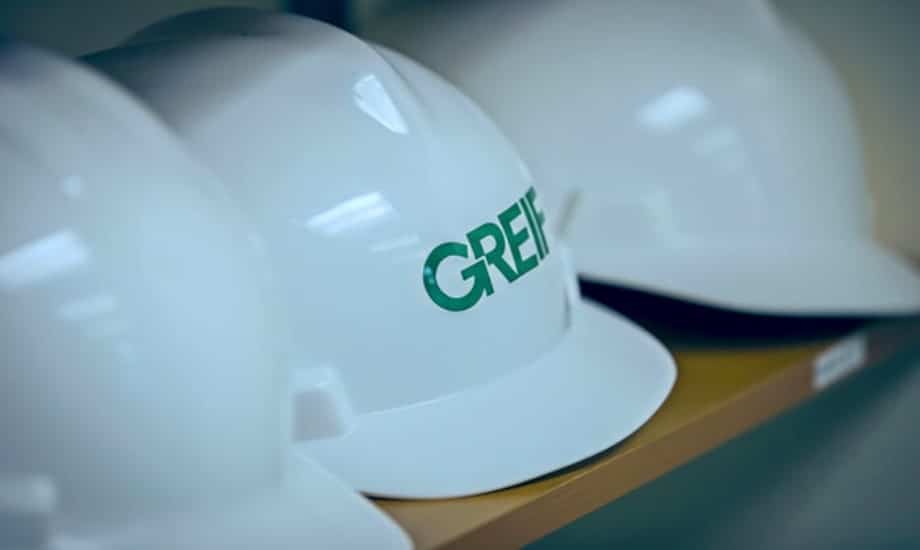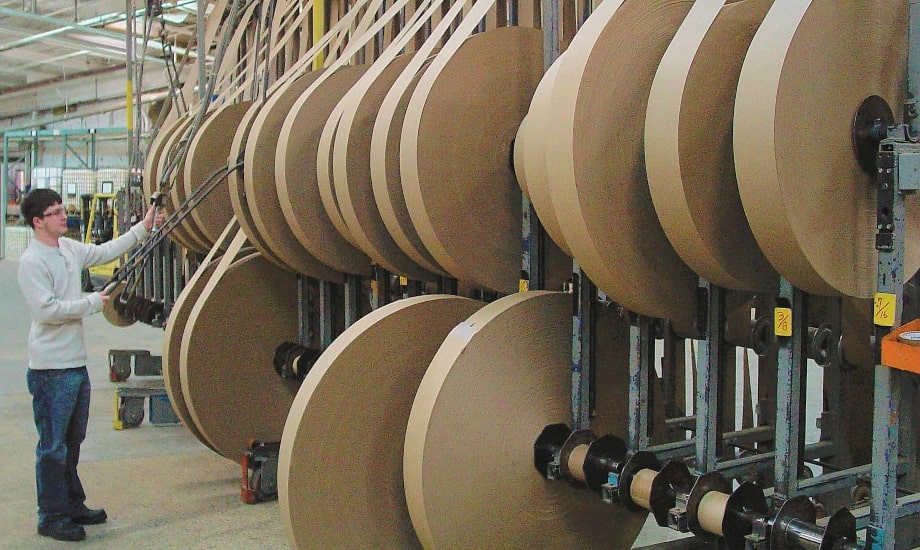Warum Wasser wichtig ist
As a global manufacturing company, Greif has a responsibility to minimize our water use and improve water quality, particularly in our most water intensive operations. Responsible water management reduces our demand for water as water scarcity and water costs are rising and ensures that water discharge from our facilities is treated and safe to protect the health of the communities in which we operate. Our water management practices simultaneously achieve these aims while creating operational efficiencies and minimizing regulatory risk.
Führung
Only 1%
total water consumed in regions with high water baseline stress
Dank unserer Bemühungen im Bereich der Wasserqualität konnten wir unser Ziel einer Reduzierung um 101 TP3T bis 2025 bereits erreichen.
Greif monitors Key Performance Indicators (KPIs) to ensure proper treatment of our wastewater. If a treatment incident occurs, the facility manager would observe a change to these KPIs, which initiates an investigation to determine the root cause and resolve the problem. When necessary, Greif engages third-party experts to support our investigations. For example, in 2020 Greif’s Tama mill experienced high biochemical oxygen demand (BOD) and nitrogen concentrations. Greif contracted with a third party to conduct a site inspection and recommend corrective actions. Based on their recommendations, we increased nutrient addition, instituted improved analytical testing to monitor nutrient levels and introduced chemical oxygen demand (COD) testing to receive faster feedback on potential issues.
While Greif’s water impact is predominately in our PPS operations, we take steps to curb water use across all our operations, particularly in water-stressed regions in Latin America, Africa and the Middle East. In these facilities, and across all our operations, we reduce water pressure where it is higher than needed, replace leaky valves and collect and use rainwater when possible. Our Global Industrial Packaging facility in Riyadh, Saudi Arabia implemented many such measures in an effort to reduce and recycle their wastewater, ultimately resulting in a 32 percent reduction in waste to landfill from their facility. Please see our Abfall page for more information on their achievement.
In 2021, we will develop standard environmental data dashboards across our mills to better understand and manage water and effluent, as well as energy data, and continue working to identify water efficiency opportunities.
Ziele und Fortschritt
In 2017, Greif announced a 2020 goal of 10 percent reduction in kilograms of biochemical oxygen demand (BOD) per metric ton of production, from a 2014 baseline of 1.47, at legacy Greif mills. Our 2017 materiality process led to the creation of new 2025 goals and restating our BOD goal as a 2025 goal. Additionally, in 2021, we plan to create 2030 goals and targets in line with the American Forest and Paper Association.
Im Jahr 2018 haben wir unseren historischen Wasserverbrauch und unsere BOD-Daten neu ausgewertet, um unsere Basiswerte und Annahmen zu bestätigen und so kontinuierliche Verbesserungen im Wasserbereich zu unterstützen. Im Zuge dieses Prozesses haben wir unseren BOD-Basiswert für 2014 auf 1,40 korrigiert.
Ziel 2025: Reduzierung des BOD-Ausstoßes in Kilogramm um 10 Prozent pro Tonne der Gesamtproduktion der Werke Riverville und Massillon auf Grundlage des angepassten Basiswerts von 2014 bis zum Ende des Geschäftsjahres 2025.
Fortschritt: Since 2017, we have reduced BOD per metric ton of production by 71.8 percent in our legacy Greif containerboard mills. Our significant progress against our BOD goal was enabled by the installation of a wastewater treatment facility at our Massillon mill. Completed in July 2017, the project led to modest improvements in 2017 and far surpassed expectations in 2018. These benefits continued to be realized in 2020.
In 2021, we will continue to track our progress in reducing BOD while controlling specific water use in our mills and reevaluate our goals to include both our legacy Greif mills and Caraustar mills that are now part of our organization. Additionally, in 2021, we will announce new water reduction targets for our mills.
Leistungsdaten
WASSER*
|
|
Geschäftsjahr 2016 |
Geschäftsjahr 2017 |
Geschäftsjahr 2018 |
Geschäftsjahr 2019 |
Geschäftsjahr 2020 |
|---|---|---|---|---|---|
|
Wasserentnahme (Tausende Kubikmeter)* |
8,420.2 |
9,666.3 |
9,360.8 |
13,864.4 |
12,936.6 |
|
Oberflächenwasser |
- |
9,242.7 |
8,630.0 |
10,266.8 |
10,132.0 |
|
Grundwasser |
- |
423.6 |
730.7 |
3,597.6 |
2,804.6 |
|
Regenwasser |
- | - | - | - | - |
|
Abwasser |
- | - | - | - | - |
|
Leitungswasser† |
- | - | - | - | - |
|
Abwassereinleitung (Tausende Kubikmeter)** |
7,961.4 |
8,983.2 |
9,316.2 |
12,403.92 |
11,935.1 |
|
James-Fluss |
- |
8,788.8 |
8,907.1 |
7,949.5 |
8,375.0 |
|
Stadt Massillon |
- |
191.6 |
407.1 |
424.0 |
355.8 |
|
Tuscarawas-Fluss |
- |
2.8 |
2.0 |
2.5 |
8.8 |
|
Süßwasser-Bach^ |
- |
- |
- |
0.0 |
0.0 |
|
Kläranlage Cobb County^ |
- |
- |
- |
844.9 |
855.0 |
|
Cincinnati Metropolitan Sewerage District^^ |
- |
- |
- |
37.6 |
40.6 |
|
Milwaukee Metropolitan Sewerage District^^ |
- |
- |
- |
349.0 |
335.9 |
|
WWTF, Sanitärbezirk des Los Angeles County^^ |
- |
- |
- |
196.8 |
189.1 |
|
Drei-Meilen-Bach^ |
- |
- |
- |
0.0 |
- |
|
Dorf Baltimore WWTF** |
- |
- |
- |
0.0 |
6.1 |
|
Westlicher Zweig des Paw Paw Creek** |
- |
- |
- |
697.1 |
581.4 |
|
Regionale Kläranlage San Jose-Santa Clara^^ |
- |
- |
- |
288.1 |
334.2 |
|
Kläranlage Tacoma Zentral^^ |
- |
- |
- |
6.9 |
8.5 |
|
Kläranlage der Stadt Fitchburg^ |
- |
- |
- |
322.6 |
309.0 |
|
Iowa-Fluss** |
- |
- |
- |
291.8 |
364.9 |
|
Kirschsee** |
- |
- |
- |
597.8 |
550.4 |
|
Iowa-Nebenfluss** |
- |
- |
- |
58.0 |
78.6 |
|
Biochemischer Sauerstoffbedarf (Tausende kg) |
1,050.4 |
890.4 |
204.2 |
3,508.3 |
3,457.1 |
|
Gesamtmenge an Schwebstoffen (kg) |
546,857 |
465,098 |
349,003 |
1,224,442 |
1,045,928 |
|
Phosphor (kg) |
5,728 |
4,991 |
6,617 | 4,708 | 4,445 |
|
Produktion (MT) |
665,000 |
690,000 |
713,336 |
1,729,062 |
1,661,228 |
|
Verbrauchsrate (m3/MT) |
12.7 |
14.0 |
13.1 |
8.02 |
7.79 |
Hinweise:
- Die Daten von 2015 bis 2018 stammen von Greifs zwei Papierfabriken, von denen sich eine in Riverville, Virginia, und die andere in Massillon, Ohio, befindet. Historisch betrachtet waren diese beiden Papierfabriken für mehr als 901 TP3T des globalen Wasserverbrauchs von Greif verantwortlich. Sie beziehen ihr Wasser aus dem James River bzw. aus standorteigenen Brunnen. Die Daten von 2019 umfassen 12 ehemalige Caraustar-Fabriken, die 2019 erworben und integriert wurden. Alle Daten von 2019 sind Daten für das gesamte Jahr. Die Qualität des von unseren Fabriken abgeleiteten Abwassers entspricht den Genehmigungsanforderungen. Kein abgeleitetes Wasser wurde von einer anderen Organisation verwendet. WWTP = Abwasseraufbereitungsanlage.
- Die Daten für das GJ 2019 umfassen die Kläranlage Mobile Wright Smith, die 2020 stillgelegt und angepasst wurde, um die Ableitung des West Branch Paw Paw Creek im GJ 2019 korrekt zu berücksichtigen.
**Vor der Direkteinleitung mit Vorklärung, Nachklärung und Belüftung behandelt
^ Behandelt mit Abwasservorbehandlung einschließlich Entfernung löslicher BOD
^^ Behandelt mit Abwasservorbehandlung nur mit Feststoffen.
† Greif verfolgt derzeit nicht die Entnahme von kommunalem Wasser.
|
Wasserverbrauch in Regionen mit hohem oder extrem hohem Grundwasserstress* |
Geschäftsjahr 2020 |
|---|---|
|
Wasserentnahme (Tausende Kubikmeter) |
170.4 |
|
Anteil der gesamten Wasserentnahme |
1% |
|
Wasserverbrauch (Tausende Kubikmeter) |
162.7 |
|
Prozentualer Anteil des gesamten Wasserverbrauchs |
1% |
Improving Our Wastewater
In 2017, Greif’s Massillon, Ohio mill completed construction of a water treatment facility to significantly reduce the biological oxygen demand (BOD) of the plant’s discharge water before being returned to the municipal treatment plant. High BOD levels promote bacteria growth, release odors and must be controlled using chemicals. Since installing the treatment facility, we reduced BOD discharged to the municipal system by over 96 percent, contributing to our 2025 BOD reduction goal. This also eliminated several chemicals that were previously needed to control bacteria.

Water Reduction at Our Baltimore, Ohio Mill
In 2020, Greif’s Baltimore, Ohio mill transitioned from direct discharge of treated wastewater to a local creek to discharging pretreated wastewater to a local water treatment facility that uses a state-of-the-art membrane treatment system to further treat water. This shift both reduced overall water discharge and supported returning cleaner water to the community. Greif engaged with local and state governments over the course of multiple years to design and approve the project, which was approved in 2019 and completed in October 2020. The project will reduce water consumption by 550,000 m3 per year. The community benefits from a cleaner surface water since several tons per year of biological oxygen demand and total suspended solids were also removed from the local creeks because of this transition.

NACHHALTIGKEITS-HIGHLIGHTS
Only 1%
Total water consumed in regions with high water baseline stress
Dank unserer Bemühungen im Bereich der Wasserqualität konnten wir unser Ziel einer Reduzierung um 101 TP3T bis 2025 bereits erreichen.



